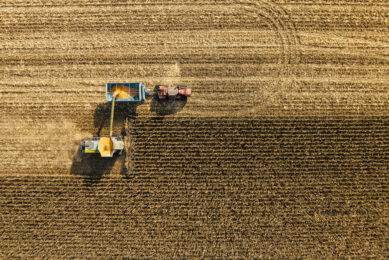Capital expenses – part 1: ‘Rethinking Big Iron’

Craig Rupp, CEO of Sabanto and a pioneer in autonomous farming, shares his perspective on the practical realities of autonomy in agriculture. As one of the first to operate a fleet of autonomous tractors, Rupp offers unique insights into why a standard autonomous tractor may often be more effective than a dedicated field robot. In this series opinion pieces, he explores the reality of autonomous farming and what it could mean for farmers today.
I’ve been driving autonomy into the ag industry for about six years now and one thing is becoming abundantly clear. While media pundits love to pitch autonomy as the silver bullet for the labor shortage, I’m seeing something different on the front lines. They’re turning to autonomy to solve a much bigger issue – the increasingly insane capital expenses in agriculture.
This is a 2-part series and allow me to start off with a real-world example.
Yirsa Farms
On February 13th, I got an email from Justin Yirsa, a wheat farmer in Montana, who claimed he was interested in moving towards a fleet of smaller autonomous machines. His questions were pretty direct, namely:
This wasn’t just curiosity. Justin was serious about putting autonomy to work in the field, not just kicking tires. That caught my interest. At the very least, I liked where his mind was going and wanted to talk to him.
When we connected, it became clear he wasn’t just thinking about solving a labor issue. He was rethinking the economics of his entire farm operation.
Evaluating the setup: tractor + seeder
Justin has a problem. He was running a Steiger tractor with a Bourgault seeder – both still running but getting long in the tooth. When he priced out a brand-new setup: a Steiger 720 and Bourgault 3725 – the discounted quote came in north of $2 million.
Out of frustration, he told me, “I can’t do this anymore. Something’s gotta change.” But the line that stuck with me the most?
I want to spend my money on land, not equipment
Justin had already done his homework. His idea was simple and solid: instead of running one expensive 60-foot seeder for 12 hours/day, run multiple smaller, cheaper systems 24 hours/day. He was disciplined, evaluating cost and performance. His goal: seed his entire farm in 20 days.
He looked at tractors ranging from 33 to 250 HP, and used horsepower-per-shank estimates to calculate the maximum drill width each tractor could realistically pull. At a nominal 5 mph, he then calculated acres per hour, then projected 24/7 runtimes to estimate how many acres each tractor/seeder combo could cover in his 20-day window.
That gave him a clear idea of how many systems he’d need. For each tractor horsepower, he built a cost table – listing tractor MSRP, seeder cost (using a cost-per-shank rule of thumb), autonomy cost, and acres covered per tendering.
Of course, there’s an important trade-off here. Running around the clock only works if both the autonomous tractors and their seeders run flawlessly and there are no long delays for tendering. That risk didn’t scare Justin. For starters, it’s not as if he’s never had to park his single big iron because of a breakdown and if one smaller machine goes down, he’d still have something greater than 0% throughput.
Closing thoughts
I’ll wager you didn’t notice what was missing from Justin’s analysis – labor. That’s the point I’m trying to make. Justin didn’t come to autonomy because he had a labor problem. He came to it because the capital expense of big iron doesn’t pencil out anymore. The cost of big iron keeps climbing, while commodity prices and net margins aren’t keeping pace. For years, farmers were focused on ‘making money’. Today they’re more concerned about ‘saving money’.
In Part 2, I’ll cover how he made it work and the 1.8 million reasons why thinking small might just be the smartest move a farmer can make today.



